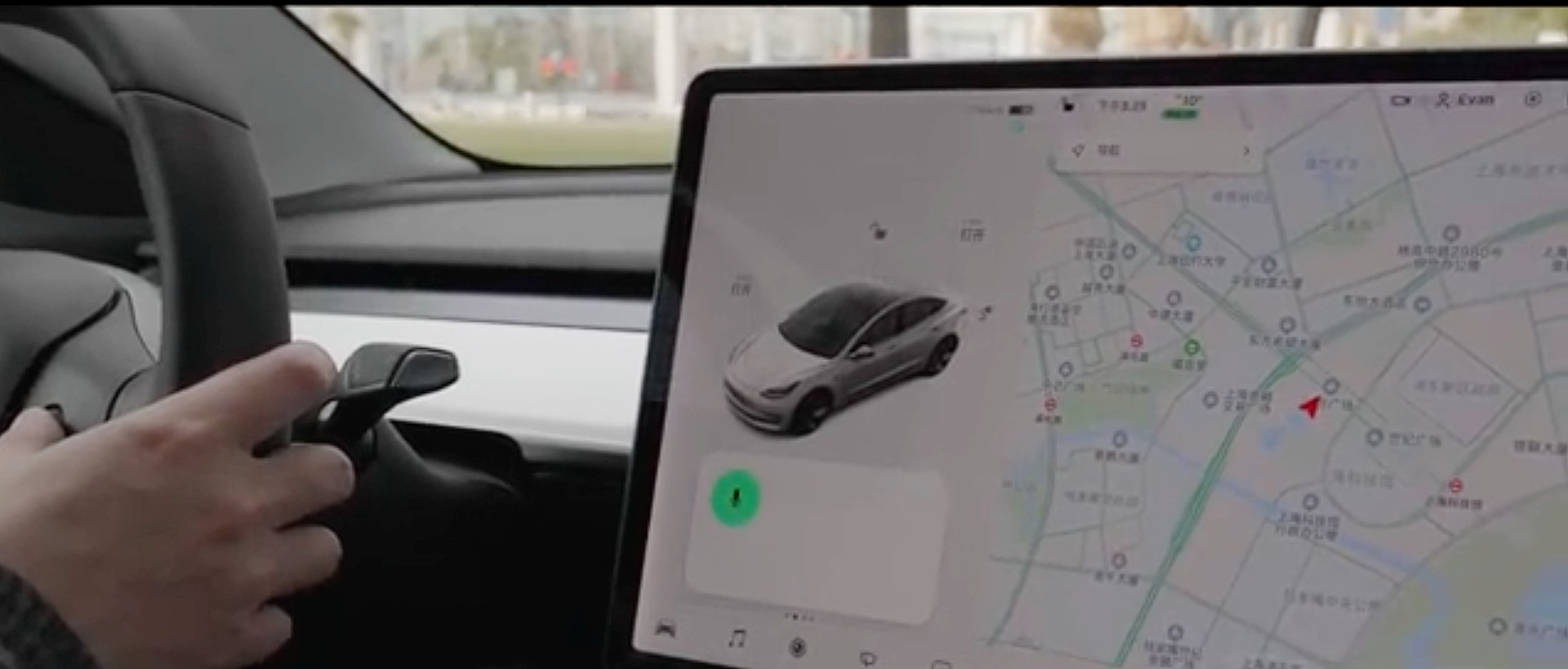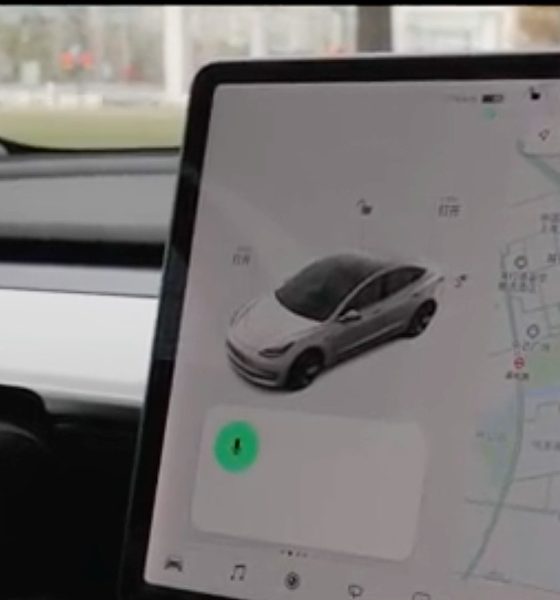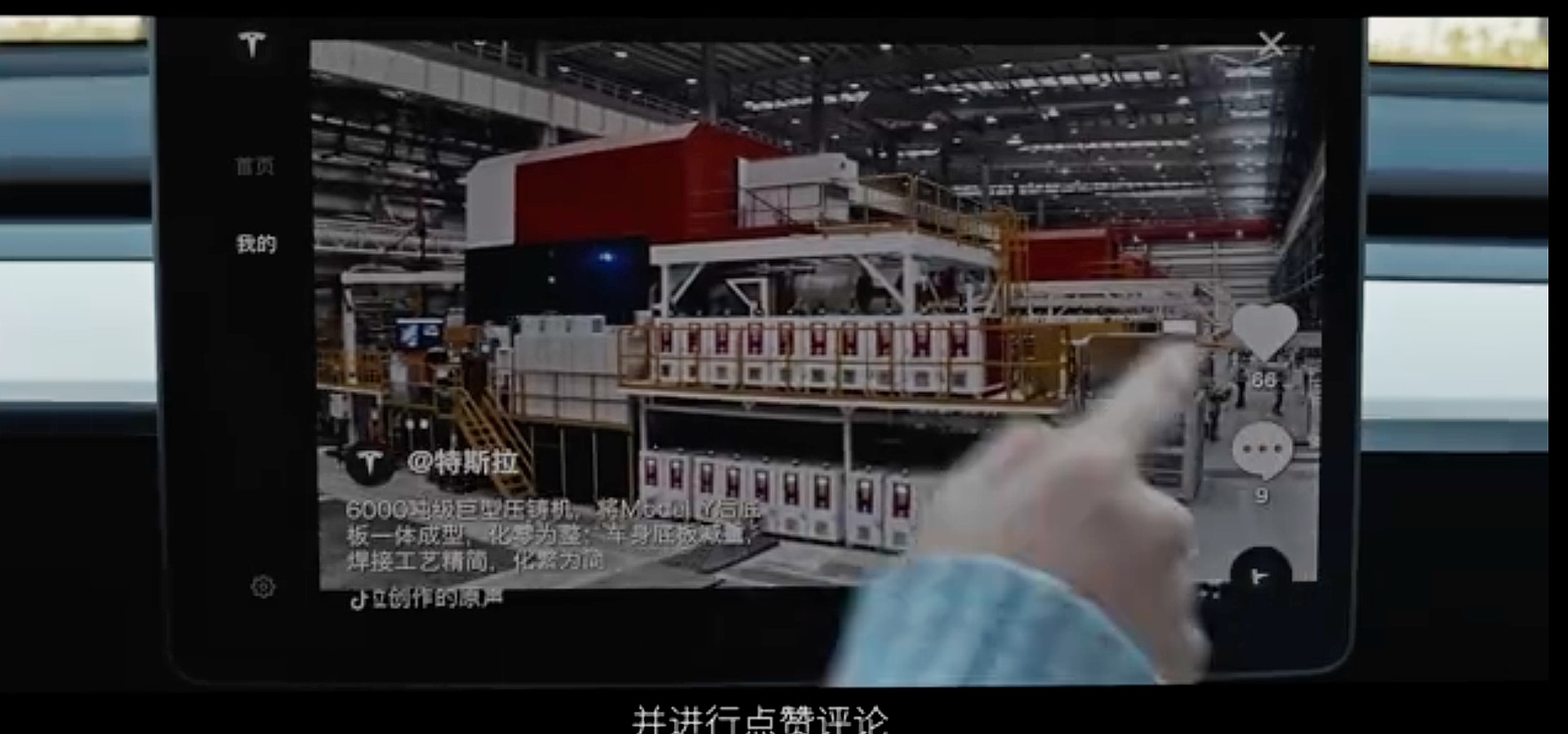

News
Tesla China launches ‘New Year of the Ox’ software update: TikTok, QQ Music Lyrics, and more
Tesla China has formally rolled out the 2021.04.05 Software Update, celebrating the Chinese New Year. “The Year of the Ox” update includes new features like TikTok, QQ Music Lyrics for sing-a-long capabilities, and improved voice recognition functionality.
The Chinese New Year has officially begun on Friday, February 12th in China, marking the beginning of “the Year of the Ox.” The Ox applies to anyone born in 1925, 1937, 1949, 1961, 1973, 1985, 1997, 2009, or 2021, and denotes someone with diligent, dependable, strong, and determinated personality traits, China Highlights said.
Tesla has offered a new software update to celebrate the beginning of the New Year, passing along several new features to owners who have embraced the company’s full-fledged effort to dominate the country’s electric vehicle market.
牛年大吉!
Happy Chinese New Year. pic.twitter.com/bMPRxX8bmY— Tesla Greater China (@teslacn) February 11, 2021
Tik Tok
Vehicles will now equip a new entertainment feature with the widely-popular TikTok application. Tesla owners will now have the ability to watch, like, comment, and share TikToks from their all-electric vehicles, a new feature that will only add to the options available to drivers at times of leisure. Entertainment options have been a focus of Tesla’s primarily due to the downtime that is required when Supercharging, but it also opens the door for more activities upon the release of the company’s Full Self-Driving suite. Tesla expects Level 5 autonomy to be released later this year in the U.S., but there is no timeline for China.

QQ Music Lyrics
Tesla also added QQ Music Lyrics, a separate feature from the company’s notorious “Caraoke” feature. At the touch of a button, Tesla owners will now be able to pull up lyrics to their favorite songs, another entertainment option that many drivers are sure to enjoy. The lyrics will support any song on the QQ Music Streaming application.

Improved Voice Recognition Capability
Improvements to Tesla’s Voice Recognition were also added to the update, giving drivers a wider range of possibilities of commands for its vehicles. Tesla displayed several examples in a video it shared to its Weibo account. One of the most standard features in most vehicles today is voice recognition or voice command features. It alleviates the need for the driver to take their hands off of the steering wheel to perform a task, making traveling safer for those who are in need of completing other tasks, like inputting a new destination for navigation, or sending a text message, while operating the car.

Tesla has become the most-popular EV brand in China since beginning deliveries of the Model 3 in January 2020. In 2020, the Model 3 was the most popular EV in China, selling over 139,000 units, holding 11% of the total electric car market share in the country. Tesla also recently began deliveries of the Made in China Model Y in January.

News
Tesla starts showing how FSD will change lives in Europe
Local officials tested the system on narrow country roads and were impressed by FSD’s smooth, human-like driving, with some calling the service a game-changer for everyday life in areas that are far from urban centers.

Tesla has launched Europe’s first public shuttle service using Full Self-Driving (Supervised) in the rural Eifelkreis Bitburg-Prüm region of Germany, demonstrating how the technology can restore independence and mobility for people who struggle with limited transport options.
Local officials tested the system on narrow country roads and were impressed by FSD’s smooth, human-like driving, with some calling the service a game-changer for everyday life in areas that are far from urban centers.
Officials see real impact on rural residents
Arzfeld Mayor Johannes Kuhl and District Administrator Andreas Kruppert personally tested the Tesla shuttle service. This allowed them to see just how well FSD navigated winding lanes and rural roads confidently. Kruppert said, “Autonomous driving sounds like science fiction to many, but we simply see here that it works totally well in rural regions too.” Kuhl, for his part, also noted that FSD “feels like a very experienced driver.”
The pilot complements the area’s “Citizen Bus” program, which provides on-demand rides for elderly residents who can no longer drive themselves. Tesla Europe shared a video of a demonstration of the service, highlighting how FSD gives people their freedom back, even in places where public transport is not as prevalent.
What the Ministry for Economic Affairs and Transport says
Rhineland-Palatinate’s Minister Daniela Schmitt supported the project, praising the collaboration that made this “first of its kind in Europe” possible. As per the ministry, the rural rollout for the service shows FSD’s potential beyond major cities, and it delivers tangible benefits like grocery runs, doctor visits, and social connections for isolated residents.
“Reliable and flexible mobility is especially vital in rural areas. With the launch of a shuttle service using self-driving vehicles (FSD supervised) by Tesla in the Eifelkreis Bitburg-Prüm, an innovative pilot project is now getting underway that complements local community bus services. It is the first project of its kind in Europe.
“The result is a real gain for rural mobility: greater accessibility, more flexibility and tangible benefits for everyday life. A strong signal for innovation, cooperation and future-oriented mobility beyond urban centers,” the ministry wrote in a LinkedIn post.
News
Tesla China quietly posts Robotaxi-related job listing
Tesla China is currently seeking a Low Voltage Electrical Engineer to work on circuit board design for the company’s autonomous vehicles.

Tesla has posted a new job listing in Shanghai explicitly tied to its Robotaxi program, fueling speculation that the company is preparing to launch its dedicated autonomous ride-hailing service in China.
As noted in the listing, Tesla China is currently seeking a Low Voltage Electrical Engineer to work on circuit board design for the company’s autonomous vehicles.
Robotaxi-specific role
The listing, which was shared on social media platform X by industry watcher @tslaming, suggested that Tesla China is looking to fill the role urgently. The job listing itself specifically mentions that the person hired for the role will be working on the Low Voltage Hardware team, which would design the circuit boards that would serve as the nervous system of the Robotaxi.
Key tasks for the role, as indicated in the job listing, include collaboration with PCB layout, firmware, mechanical, program management, and validation teams, among other responsibilities. The role is based in Shanghai.
China Robotaxi launch
China represents a massive potential market for robotaxis, with its dense urban centers and supportive policies in select cities. Tesla has limited permission to roll out FSD in the country, though despite this, its vehicles have been hailed as among the best in the market when it comes to autonomous features. So far, at least, it appears that China supports Tesla’s FSD and Robotaxi rollout.
This was hinted at in November, when Tesla brought the Cybercab to the 8th China International Import Expo (CIIE) in Shanghai, marking the first time that the autonomous two-seater was brought to the Asia-Pacific region. The vehicle, despite not having a release date in China, received a significant amount of interest among the event’s attendees.
Elon Musk
Elon Musk and Tesla AI Director share insights after empty driver seat Robotaxi rides
The executives’ unoccupied tests hint at the rapid progress of Tesla’s unsupervised Robotaxi efforts.

Tesla CEO Elon Musk and AI Director Ashok Elluswamy celebrated Christmas Eve by sharing personal experiences with Robotaxi vehicles that had no safety monitor or occupant in the driver’s seat. Musk described the system’s “perfect driving” around Austin, while Elluswamy posted video from the back seat, calling it “an amazing experience.”
The executives’ unoccupied tests hint at the rapid progress of Tesla’s unsupervised Robotaxi efforts.
Elon and Ashok’s firsthand Robotaxi insights
Prior to Musk and the Tesla AI Director’s posts, sightings of unmanned Teslas navigating public roads were widely shared on social media. One such vehicle was spotted in Austin, Texas, which Elon Musk acknowleged by stating that “Testing is underway with no occupants in the car.”
Based on his Christmas Eve post, Musk seemed to have tested an unmanned Tesla himself. “A Tesla with no safety monitor in the car and me sitting in the passenger seat took me all around Austin on Sunday with perfect driving,” Musk wrote in his post.
Elluswamy responded with a 2-minute video showing himself in the rear of an unmanned Tesla. The video featured the vehicle’s empty front seats, as well as its smooth handling through real-world traffic. He captioned his video with the words, “It’s an amazing experience!”
Towards Unsupervised operations
During an xAI Hackathon earlier this month, Elon Musk mentioned that Tesla owed be removing Safety Monitors from its Robotaxis in Austin in just three weeks. “Unsupervised is pretty much solved at this point. So there will be Tesla Robotaxis operating in Austin with no one in them. Not even anyone in the passenger seat in about three weeks,” he said. Musk echoed similar estimates at the 2025 Annual Shareholder Meeting and the Q3 2025 earnings call.
Considering the insights that were posted Musk and Elluswamy, it does appear that Tesla is working hard towards operating its Robotaxis with no safety monitors. This is quite impressive considering that the service was launched just earlier this year.








